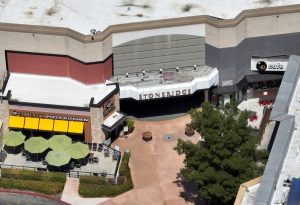About 2.3 million Californians have voted so far, just 10% of the state’s 22 million registered voters, with Republicans leading the way in the early bird game.
But although Republicans and senior citizens are voting early in the Nov. 5 election at a higher rate than their Democratic and younger peers, that’s not unusual and doesn’t signal a political shift in deep blue California, said Paul Mitchell, vice president of Political Data Inc., a California-based progressive voter data analysis company.
“Does that mean young people are never going to turn in their ballots? No,” Mitchell said.
In a state where Democrats enjoy a 2-1 advantage over Republicans in voter registration, 1.1 million Democrats and 709,000 Republicans had cast votes as of Tuesday morning.
In most Bay Area counties, about 10% of voters have cast their ballots, too. The outlier is Marin County, which reported a 15% turnout. Alameda County’s 3% turnout by Tuesday morning likely reflects a county that’s slow to update its figures, Mitchell said. Alameda County Registrar Tim Dupuis did not respond to an inquiry.
The election will have profound political consequences on the national, state and local levels. While heavily Democratic California is expected to produce an easy win for Vice President Kamala Harris in her bid for the presidency (and its important 54 Electoral College votes), a half-dozen House of Representatives districts in the state could decide which party controls Congress, and voters statewide will be deciding measures to toughen criminal penalties, fund schools and climate projects.
Political consultants are closely watching October’s tallies for clues about who’s voting early and what that might signal about voter motivation to turn out. With less than two weeks until Election Day, it remains to be seen if Democratic and Republican candidates can energize their supporters enough to get them to the polls in greater numbers than usual.
California, which introduced statewide vote-by-mail in 2020 during the COVID-19 pandemic, doesn’t have a lot of history with that election format, and experts like Mitchell say that makes it hard to draw parallels in the state’s voting patterns to this year’s race.
Nationally, early voting by mail has been embraced by many states since the pandemic. Some 17 million people across the country already had cast a ballot as of Monday, and early voting now is underway in the seven swing states expected to decide the presidential race.
Pennsylvania, Michigan and Wisconsin are political battlegrounds between Harris and former Republican President Donald Trump, and experts generally agree that the race is a toss up.
Republicans, who four years ago criticized mail ballots as fraud-prone and, though no proof of widespread problems has surfaced, denied Trump’s 2020 loss to President Joe Biden, have this year been working to persuade their voters to embrace it and vote early. There is evidence the strategy is working.in some states, such as Arizona and Nevada.
Beyond the presidential race, California has six congressional districts that could decide control of the U.S. House of Representatives. These races could be settled by razor-thin margins. In the Central Valley’s 13th Congressional District, for instance, Republican Rep. John Duarte eked out a victory two years ago by just 564 votes. This year, he’s squaring off with the same opponent, former Democratic state Assembly member Adam Gray.
Locally, Oakland Mayor Sheng Thao and Alameda County District Attorney Pamela Price are fighting well-funded recall campaigns. And statewide, voters are set to consider a proposition that would enhance penalties for shoplifting and drug possession.
In the Bay Area, election officials are planning for the high turnout that’s typical of a presidential election year. There’s even the possibility that turnout will break records.
Statewide, almost 81% of registered voters cast ballots in 2020, the highest turnout since Jimmy Carter defeated Gerald Ford in 1976. In 2016, 75% of voters participated in California. Turnout tends to be much lower when the Oval Office isn’t up for grabs. In 2022, about 51% of voters cast ballots.
The Santa Clara County registrar’s office is expecting up to 85% turnout by county voters, spokesperson Steve Goltiao said. That’s what the county experienced in 2020, he said. In Contra Costa County, election officials are planning for up to 90% of its 714,000 voters to cast ballots, said assistant registrar Helen Nolan.
Conventional wisdom is that Democratic candidates benefit from higher turnout. But Mike Madrid, a political consultant and a former spokesperson for California Republicans, doesn’t think that’s necessarily true. He pointed out that Republicans picked up a dozen seats in the House in 2020, when turnout was nearly record-breaking. However, Democrats still retained a narrow majority then.
“That idea… is really going to start being put to the test here,” Madrid said.
Mitchell anticipates slightly lower turnout than 2020, at about 78% statewide. He says experts shouldn’t draw comparisons with prior election years when searching for answers about turnout this year. In 2016, California had not yet implemented vote-by-mail statewide, in which every registered voter is mailed a ballot. The strategy increases participation in elections by making it more convenient to vote.
And Mitchell noted that the COVID-19 pandemic was ravaging the U.S. in November 2020. With about two weeks until Election Day, turnout that year was about double this year’s. Mitchell says voters are busier now.
“People have to drive to work or drive to school or take their kid to soccer practice,” he said. “You’re not getting the same attention to these early ballots, but that doesn’t mean they’re not going to be voting.”
The New York Times contributed to this report.












